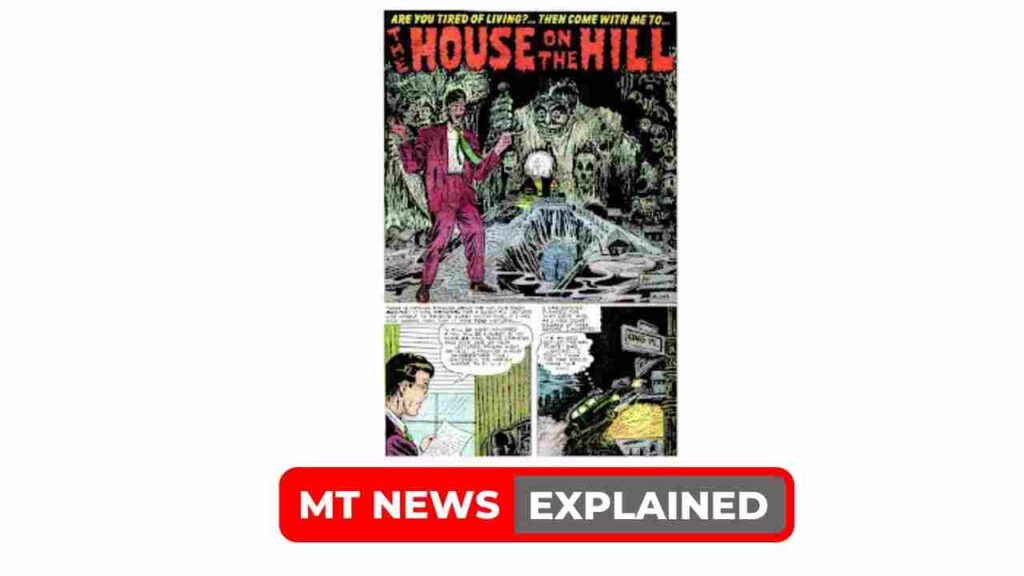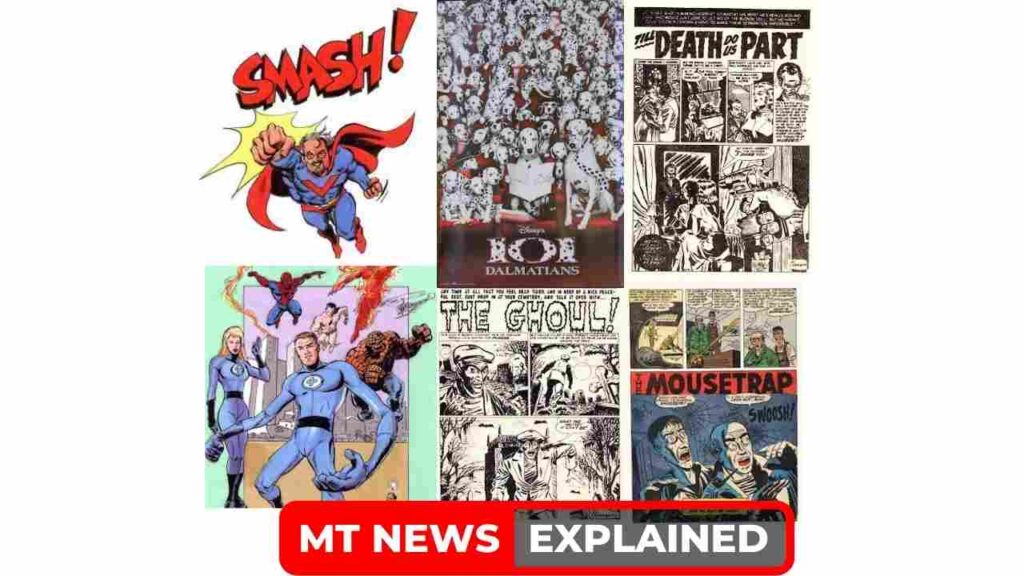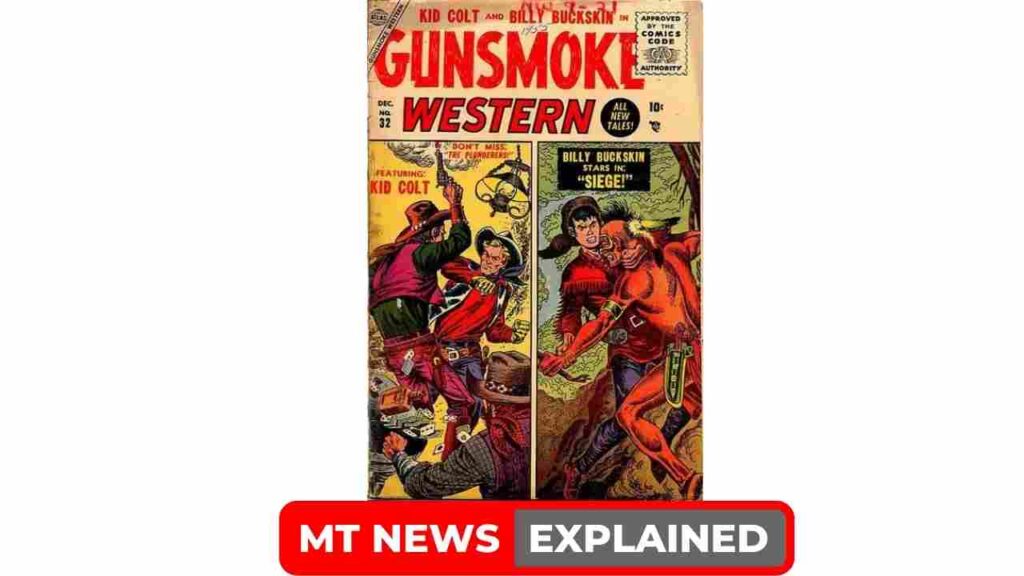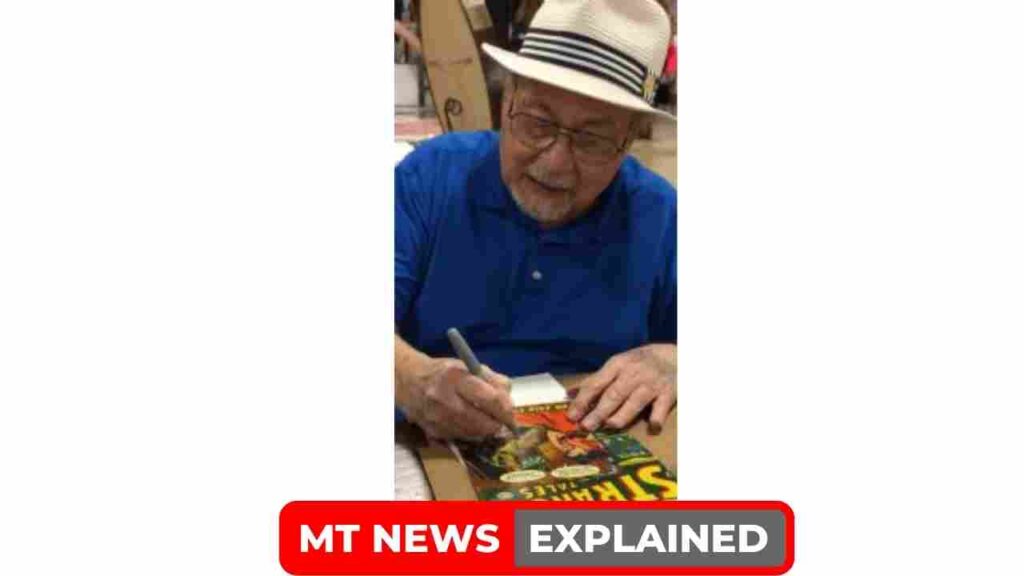
One of the last living comic book creators who worked for Marvel in the 1950s, Vic Carrabotta, has passed away at the age of 93. Let’s see how did Vic Carrabotta die and about Marvel comics artist Vic Carrabotta cause of death in detail.
How did Vic Carrabotta die?
At the age of 93, Victor “Vic” Carrabotta, one of the few surviving comic book creators who worked for Marvel in the 1950s and whose work appeared in the first issue of Journey Into Mystery, has passed away.
Vic Carrabotta, one of the last surviving comic book artists to have worked at Marvel in the 1950s, has passed away at age 93 https://t.co/JTXDXBIpBx pic.twitter.com/fVL81321g7
— Comic Book Resources (@CBR) November 23, 2022
Vic Carrabotta cause of death
Vic Carrabotta cause of death was not disclosed yet. There are no information available about Vic Carrabotta cause of death.
Medico topics have been trying to reach out to the family and relatives for comment on the incident. So far no responses have been received. We will update the page once enough information is available. More information on Vic Carrabotta cause of death will be added soon.
Who was Vic Carrabotta?
Vic Carrabotta, an American comic book artist and advertising creative director, was born on June 24, 1929, and his career began in the early 1950s.
His comic book art includes a lot of pieces for Atlas Comics, Marvel Comics’ forerunner from the 1950s.
Early Life
Carrabbotta was either born in the Eastchester area of the borough of The Bronx or the Eastchester suburb of New York City.
He first attended Catholic primary school before moving on to Manhattan’s High School of Music & Art and the Cartoonists and Illustrators School (later named the School of Visual Arts). Carrabotta, who has been drawing since elementary school, became friends with professional comic book artist Jerry Grandenetti when he was a teenager.
Jerry Grandenetti lived close by and taught Carrabotta how to ink, which is the process in which the pencil artist’s work is enhanced with ink for aesthetic and print-reproduction purposes.
1948-1951
Carrabotta worked in construction after serving in the US Marine Corps from 1948 to 1951, where he played with the Marine Band.
When Carrabotta tried to break into the comic book industry, he was rejected by several publishing houses, notably by Stan Lee, the editor-in-chief of Atlas Comics, the forerunner of Marvel.
A big Offer
Jack Kirby, who turned down Carrabotta for work at a comics studio, later offered the struggling artist a break after spotting his pregnant wife in the lobby as he was seeing Carrabotta out, according to Carrabotta in a 2006 interview.
Jack was very nice. I was just a kid back then, only 21. As he walked me out, I said, “By the way, this is my wife, Connie.” Connie stands up and Jack does a double-take up and down because she’s pregnant…. He said, “Sit here a minute, I need to go back to my office.” He writes a note and seals it, and tells me to go back to Stan with the note. … [Upon doing so,] Stan said, “Jack says you’re a good artist.” I said, “Oh, I don’t know. Would you like to see my samples?” He says, “No, that’s OK. Jack says you’re a good artist. I’ll tell you what,” and he throws this script across the desk. He says, “I want this back in a week.”
Carrabotta’s first assignment for Marvel
Carrabotta’s first task for Marvel was a horror story (Martin Goodman, the company’s owner, loved to employ a variety of names for his businesses, thus until the 1960s, Marvel didn’t have a set name).
However, Atlas is the name that people most frequently connect with in the 1950s. Marvel first appeared in an early 1952 issue of Astonishing #13, in a brief horror story titled “The House on the Hill.”

The first edition of a brand-new anthology called Journey Into Mystery had a Carrabotta story titled “Haunted!” the following month (82 issues later, the series would introduce Thor)…

Before the implementation of the comics industry’s self-censorship Comics Code, Carrabotta contributed to early issues of such Atlas anthologies as Adventures into Terror, Journey into Mystery (including issue #1), and Strange Tales.

Later, he wrote science fiction and fantasy suspense pieces for magazines like Journey into Unknown Worlds, Marvel Tales, Mystic, Uncanny Tales, and others. One of the few Atlas artists, Carrabotta routinely signed his work, which made it easier to compile his bibliography.
Vic Carrabotta’s last work as Comic Artist
In the 1950s, Carrabotta also produced a small quantity of work for Lev Gleason Publications, Fiction House, and Youthful Comics (Chilling Tales, Atomic Attack!, Black Diamond Western, fillers in Crime Does Not Pay, and that company’s Daredevil).
A story in Gunsmoke Western #49 (Nov. 1958) served as Carrabotta’s final published work before he retired from the comic book industry due to a downturn in the industry.

However, Carrabotta did make one appearance in a Marvel comic during the period known as the Silver Age of comic books: Gary Friedrich’s 17-page story “The Challenge of Cole Younger” in Two-Gun Kid #86 (March 1967).
In the 1970s, Marvel reprinted several Carrabotta tales, and the miniseries reprint anthology Curse of the Weird included one more.
Vic Carrabotta remembers Stan Lee
In 1953, Carrabotta and Lee first collaborated. He claims that Lee, who created Spider-Man first, was a revolutionary in his day.
“Stan, you can talk about him forever you know. Stan was a very nice guy. He’s going to be well missed. I can tell you right now,” said Carrabotta. “He laid the groundwork for what’s going on really. He leaves a legacy behind for a lot of artists. I look at it if it wasn’t for him, I wouldn’t have been here.”
After leaving Comic Industry
The majority of comic book buyers are not familiar with Vic Carrabotta, but this is not because of the calibre of his work, but rather the quantity. Vic started working at Timely in the early 1950s after meeting Stan Lee and receiving a letter of recommendation from Jack Kirby.
Vic remained there until the now-famous “Implosion,” which saw many creators fired. Vic never returned to the comic book industry after leaving it in the late 1950s, in contrast to the majority of the artists from the Golden Age. Vic instead established careers in advertising, illustration, design, and storyboards.
Later Life and Career
Vic never really looked back once he quit the comic book industry.
Vic was able to effectively use his artistic abilities to become an award-winning advertising illustrator and earned the moniker “Quick Vic” for his quickness in meeting deadlines.

On his website, Vic lists a short list of the businesses that have benefited from his conceptual and illustration abilities.
These businesses include Y & R, Grey Advertising, McCann-Erickson, Disney, Delta Airlines, Coca-Cola, AT&T Worldwide, General Motors, Palmolive, SCANA, Advil, Reader’s Digest, Sunbeam, Ometric, Jell-O, Kenner Toys, and many more.
Comic Book Conventions
Over the following thirty to forty years, Carrabotta would have a highly successful career in advertising, working as an art director for some significant advertising agencies.

Carrabotta moved to South Carolina in the 1950s, and in the early 2000s, he moved back there after briefly relocating to the Northeast during his work in advertising.
Over the previous 20 years, he had been a mainstay at comic book conventions in the South.
Personal Life
Carrabotta has had two marriages.He’s got six kids. He and his family resided in Westport, Connecticut, for the final years of his advertising business.
However, after getting remarried and moving to Columbia, South Carolina, after the 9/11 World Trade Center terrorist assault, he and his new wife fled the New York metropolitan area.
He later spent three years in Los Angeles, California, where he worked on the movie posters for the Pirates of the Caribbean series.
Tributes to Vic Carrabotta
Many people expressed their profound sympathies to his family and expressed how much they loved him. The news of this occurrence has upset his supporters and fans.
Comics Royale 007 tweeted,
“Hi everyone, translations will be returning soon once I get moved into my new home. For now I just wanted to say R.I.P. to the great Atlas era artist Vic Carrabotta. He was a true gentleman and I’m thrilled to have a piece of Bond art by him. Best wishes to his family and fans.”
At @CBR, I wrote about the passing of Vic Carrabotta, one of the last surviving comic book artists to have worked at Marvel in the 1950s (including the first issue of Journey Into Mystery!). https://t.co/JLlK8JM3Lk
— Brian Cronin (@Brian_Cronin) November 23, 2022
Adam tweeted,
“With the announcement of famous Marvel artist Vic Carrabotta passing, I thought I would share a piece he did for me last year. While we didn’t talk for long, he was so kind to me and took his time talking to me and drawing for me. This is a heartbreaking loss. He will be missed.”
We wish him eternal peace and send our thoughts and prayers to his loved ones, family, friends. May he rest in peace.
KEEP READING,
How did John Veltheim die ? Founder of Body Talk system cause of death Explained
How did Casey Coulton die? Missing Teenager from Aberdare cause of death Explained
Follow us on Twitter for more updates.
Rohini (Editor) is a content writer with 3 years of experience in content writing. She joined Medico Topics on the Breaking News trainee scheme in 2022 and now works on MedicoTopics.com. She possesses a keen interest in political and entertainment matters, including the latest and most widely circulating celebrity rumors, and comprehensive resources on the wealth of renowned actors, athletes, players, and politicians around the globe.
Coverage: Obituary, Crime, Missing, Entertainment
